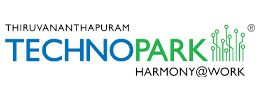HOW SMART TRANSPORTATION INITIATIVES CAN TRANSFORM CITIES?
As more people move into cities, civic authorities are putting in place smart transportation initiatives. These initiatives aim to reduce infrastructure costs, alleviate traffic bottlenecks, optimize routes, and foster road safety. What drives these initiatives is the data from connected vehicles. Information from vehicles helps smart cities to create holistic plans that encompass an entire city’s ecosystem.
The Internet of Things (IoT) is transforming the transportation industry. As the market for IoT is estimated to reach $1.7 trillion in 2020, smart transportation systems are creating opportunities across a wide range of industries and market segments. Opportunities abound in automating roadways, railways, and airways; transforming passenger experiences; and reshaping the way cargo and merchandise are tracked and delivered. Riding the IoT wave is a prime component in smart transportation systems: big data analytics.
Massive volumes of data are generated by smart technologies deployed within connected vehicles. According to a study by Hitachi, a single connected car will produce more than 25 GB of data per hour of use. Putting this data into perspective enables businesses and civic authorities to see patterns they can use to develop a range of innovative services towards building a connected infrastructure.
CONNECTED VEHICLES ARE THE NEW “EYES”
As IoT can create connections between the smart vehicle and the transportation infrastructure, it offers several benefits, including a coordinated system designed to get everyone safely to their destination on time. Sensors installed on the vehicles could send a signal that alerts nearby vehicles about any problem, enabling them to slow down or take an alternate route. In-vehicle sensors and systems create valuable information flows:
Smart Parking
 IoT-enabled parking garages can monitor capacity. They can report on the location and number of available parking spaces in a facility to the drivers who enter.
IoT-enabled parking garages can monitor capacity. They can report on the location and number of available parking spaces in a facility to the drivers who enter.
Predictive Maintenance
 In-vehicle sensors can analyze engine loads, driver behavior, road condition, etc. This can then compile a vehicle history that can be used to optimize scheduled maintenance.
In-vehicle sensors can analyze engine loads, driver behavior, road condition, etc. This can then compile a vehicle history that can be used to optimize scheduled maintenance.
Optimized Routing
 Analysis of traffic conditions, fuel consumption and vehicle idle time between routes can determine the most efficient route for vehicles to follow.
Analysis of traffic conditions, fuel consumption and vehicle idle time between routes can determine the most efficient route for vehicles to follow.
Video Surveillance
 By linking dashboard cameras and other video sources with cloud storage, organizations can stream video for immediate review.
By linking dashboard cameras and other video sources with cloud storage, organizations can stream video for immediate review.
Rider Services
 Bus and train services can provide real-time route data to customers’ smartphones, showing where the next bus is and when it is due.
Bus and train services can provide real-time route data to customers’ smartphones, showing where the next bus is and when it is due.
HOW CONNECTED INFRASTRUCTURE CAN TRANSFORM URBAN TRAVEL
As smart cities evolve, different systems in the city will be able to communicate with each other. Connected cars help cities to monitor their transport infrastructure. This in turn can enable the development of allied services that are adaptive, and the introduction of predictive tools that allow the best transport service to be offered, based on forecast and real-time environmental, traffic, and other related data. For instance, data from connected sensors can give many insights such as how citizens use transport, what planning is required, and what information can be shared with citizens to enhance their travelling experience. By combining multiple sources of data, such as weather and traffic information, complex analysis of travel patterns can be undertaken.
When vehicles, passengers and infrastructure can communicate with each other, it becomes possible for the city to adapt and integrate different systems, enabling new services to be deployed. Traffic lights can automatically turn green for emergency vehicles, buses can ply routes where more people are waiting, vehicles can pay tolls for distance driven, and pedestrians can have priority over vehicular traffic in some areas.
To make the most of IoT in transport services, the onus is on the civic authorities and service operators. Understanding how best to utilize the data and connectivity options available to them will allow civic authorities to redefine the urban infrastructure landscape to greater effect, and for common good.




